Succulents are cherished for their beauty and low care needs. But what if your plant’s leaves start turning red? Are you worried? You might think it’s dying. But that’s not always the case! This article will express why succulent leaves turn red. You’ll learn if it’s a concern and what steps to take. Turn your worry into knowledge. Let’s delve into the captivating world of succulents!
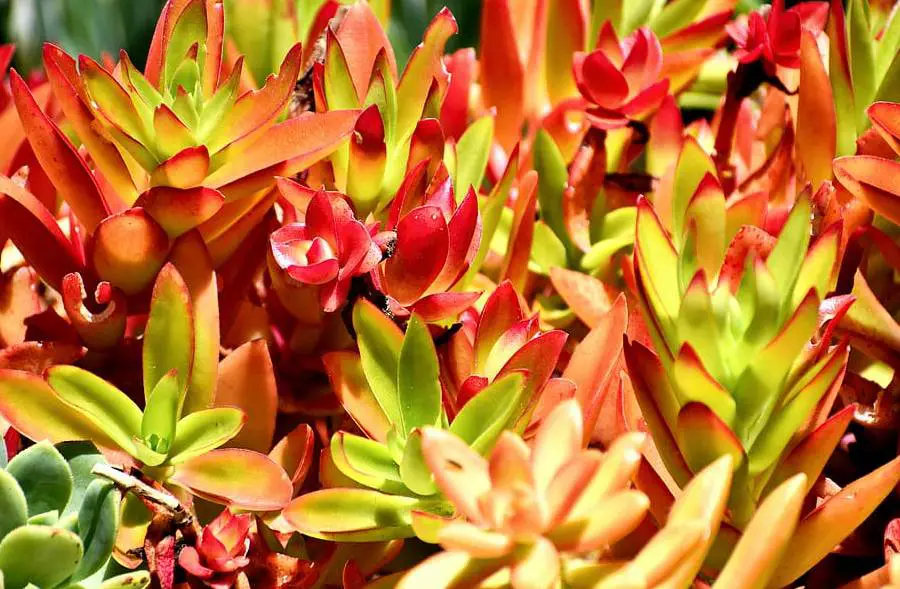
Table of Contents
Succulent Leaves Turning Red: What Are The Reasons?
The red color in succulent leaves can be due to several factors. Sun stress is a typical cause. Succulents respond to intense light by producing pigments that give them a red tint.
Temperature shifts, both hot and cold, can also cause color changes. Poor nutrition may make your plant unhappy, resulting in red leaves. Overwatering is another common issue.
It causes roots to rot, stressing the plant and leading to reddening. Finally, some succulents naturally turn red during certain growth stages. Each plant is unique, and understanding its needs can keep it healthy and vibrant.
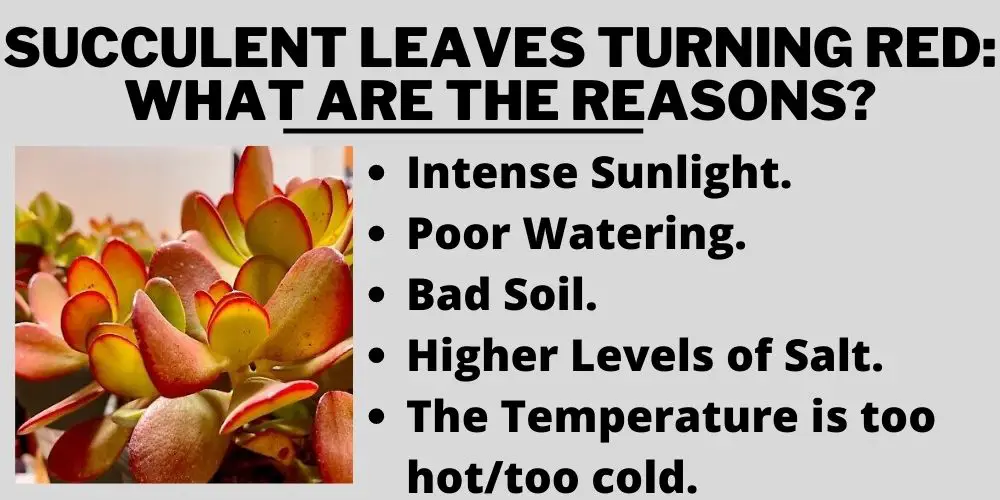
Intense Sunlight
As a succulent is exposed to increased sunlight, it will produce a higher concentration of carotenoids to help protect it against UV rays.
You could argue that desert-dwelling succulents are exposed to constant intense sunlight, but more often than not, they are nestled between other trees or in rock cracks which offer much-needed shade when necessary.
So when these conditions are applied to your average garden-grown succulent, you will see these yellows, oranges, and reds coming through
Poor Watering
Poor watering will dry out your succulents; this prevents the cells from retaining water. Long-term abuse will, unfortunately, kill your plant. The cells won’t be able to compete with and recover from excess sunlight and temperature swings which will turn the leaves red in the process.
Poor watering can also invite unwanted guests, such as bugs and other insects. They are attracted to the excess moisture which sits in the bottom of the pot due to overwatering. They feed on the leaves, lay eggs which expand their army, secrete substances, expose the plant to disease, and ultimately kill them.
You may also find useful: How Long Can Succulents Go Without Water?
Bad Soil
If succulent soil is of bad quality, the nutrient content can quickly become a big issue. Poor nutrient supply will almost instantly change the color of the plant from lush green to red. It’s a quick fix but can also become problematic as plants require food to survive!
Higher Levels of Salt
If a succulent’s leaves succumb to higher levels of salt, the plant will struggle to retain water which in turn will turn the leaves red. Salt can come from location (planting near an ocean), water quality, or the soil already holding higher levels, for example.
The Temperature is too hot/too cold
Extreme temperature swings can see succulent leaves turn not only red but also blues and purples. Especially when under colder duress. Depending on the amount of carotenoid or anthocyanin used in the temperature change, the colors will transform accordingly.
Are Succulent Leaves Turning Red/Stress Bad?
When the leaves of a succulent plant alter in color (especially red), they are more than likely trying to adjust to environmental changes. If the plant is forced to succumb to these changes for an extended period of time, the stress that is caused can ultimately kill it.
On the other hand, stressing succulents can also be practiced as an art form. This is usually done in temporary spurts, though, as it prevents the succulent from any serious damage.
So to end the debate of whether or not stressing a succulent is harmful, it’s safe to say that it is quite ok as long as it isn’t for too long.
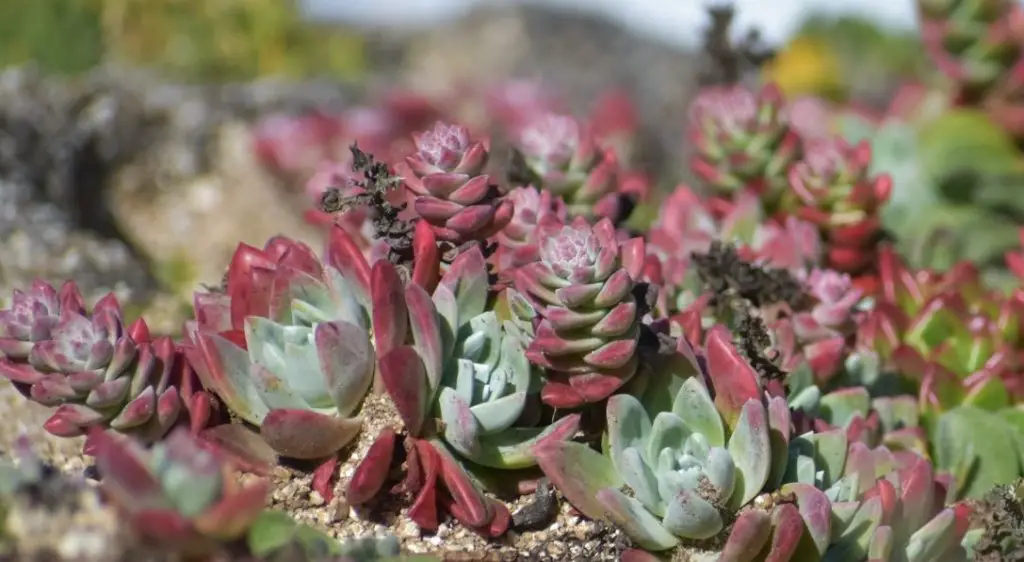
It’s a good idea to bring your plant back to its green color every now and then to reload as well as strengthen it! Stressing a succulent is not only limited to reds, either.
Carotenoids can also produce shades of yellows and oranges when succulents are exposed to warmer temperatures.
Deep blues, browns, and purples can be achieved when anthocyanins are more present whilst under the influence of lower temperatures. These changes are bound to occur if the succulent is growing outdoors as temperatures fluctuate, soil decays, sunlight is increased, and watering isn’t scheduled.
It’s a little easier to control these changes with indoor plants, given that we can manipulate the majority of these conditions with little hindrance.
Succulent Good Stress vs. Bad Stress: How to Know?
Not only are there both good and bad stressors, but they also come in varying degrees. Let’s have a look at these in a little more detail. We will also go deeper into how a succulent can be identified as healthy or unhealthy whilst under said stressors.
What is Good Stress?
Generally speaking, a succulent that is stressed and changes its color but maintains its original shape and or features is known as ‘good stressed.’ The leaves will remain plump, the stems will still be thick, and the overall demeanor of the plant will maintain its proud form.
A lot of species of succulents can start to produce red tips when they are ‘stressed’ by higher temperatures. This is just the carotenoids using their defense mechanism and is far from causing the plant any harm. A little shade can bring it back to its original lush green color.
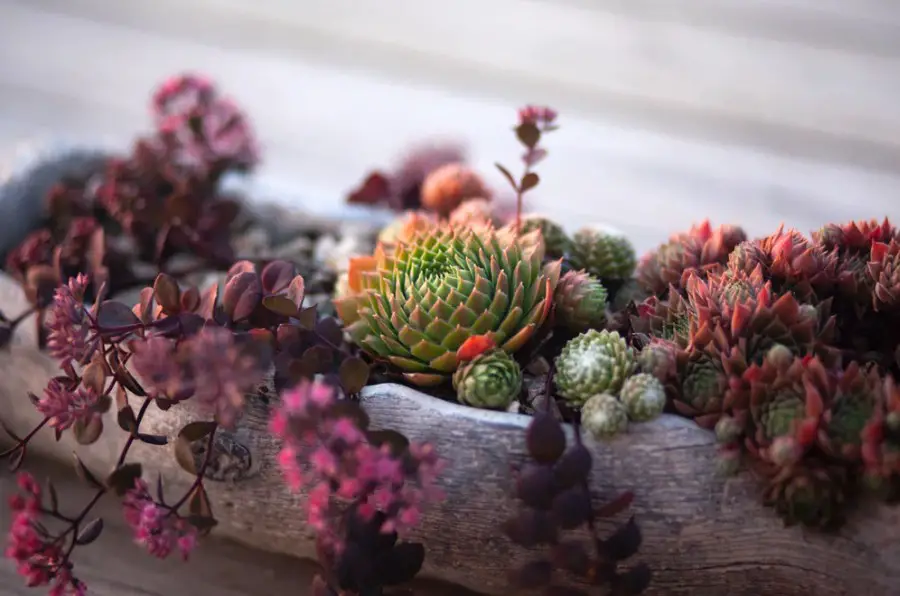
What is Bad Stress?
A stressed succulent that is classified as ‘bad stressed’ will appear disfigured, distorted, and generally unwell. The leaves will look shriveled and wilt, the stems will seem limp, and they may even display spotty areas alongside their pigment discoloration.
We looked at red shading being a sign of healthy stress, but red tints can also be considered a sign of a badly stressed plant.
It could reveal a possible insect infestation. Bugs such as spider mites and aphids can unexpectedly cause real damage to your plants, leaving red marks as evidence of their existence. Either way, bad stressors will require immediate action to help revive a sick plant.
How to know if your succulent is healthy/unhealthy?
The easiest giveaway that your plant is either healthy or unhealthy under related stressors is its appearance. Most succulents can change their color when grown during environmental changes; the healthy ones will still look the same before and after the changes.
They will feel plump, retain water and continue to thrive. The ones you should pay attention to are those that severely alter their form under the stressors.
You may see changes such as the inability to take in nutrients, smelly insect-infested soil, and general disfiguration.
How do I know if my succulent is dying?
If your succulent is dying, it will lean more toward the light. Succulents really need light to thrive, and without it, they will slowly wither away.
As a last gasp of hope, they will bend toward a light source. Other signs of near death are white fungus appearing, covering brown spots, black, shriveled, rotting leaves, or brown, mushy leaves, which signal root rot.
Underwatered vs overwatered succulent
Overwatering and underwatering your succulents can have some really heavy consequences if they are not regulated. One of the biggest issues with succulents is the degree of difficulty that is required to identify whether or not your plant suffers from either one of these problems.
Quite often, it will feel like you’ve given them minimal water as they will appear dry at the top, so you add some more.
As a result, the roots will unknowingly bathe in the moisture. Too much water will bring on root rot. Not enough water will dry your plant out, causing it to shrivel up and die.
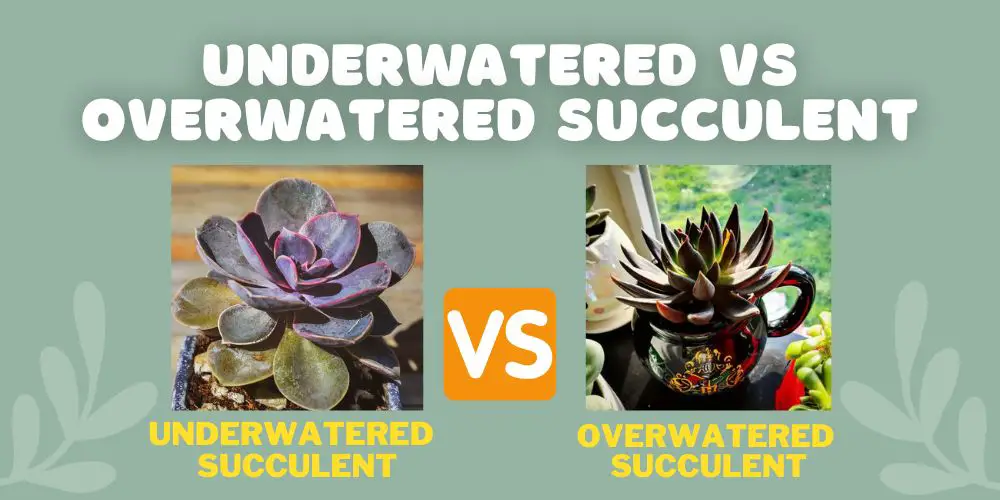
If you are struggling to work out the moisture status of your succulent, there are some subtle visible signs that can offer sound advice. The leaves paint the clearest picture. For example:
An overwatered succulent can produce variations of
- Soft, mushy, almost gooey leaves.
- Leaves that appear almost see through.
- Black leaves.
- Shedding of its leaves as they slowly rot.
- A round general droopy, disfigured, discolored plant.
On the other hand, an underwatered succulent can produce variations of
- Shriveling of the leaves, which appear wrinkled.
- Brown, dry, almost crumpled leaves.
- Softer, more flat leaves that are borderline shedding at the touch.
One of the best ways that we have learned to regulate the watering routine of a succulent is by using the probe method. Simply use your finger, a skewer, or a baking prick and push down into the soil on the inside of the pot. If the probe comes up dry, it’s a good idea to give it some water.
If it comes up wet and clogged with soil, wait until it’s bone dry before adding any more moisture.
How do you fix red succulents?
Whether or not you’ve either accidentally disowned your succulent or you’re trying to alter its color for aesthetic purposes, there is the hope of returning it to its natural form.
If the leaves are shedding, turning yellow, swollen, and/or mushy, it’s usually an issue with overwatering. If they are brown and shriveled, they can be sunburnt.
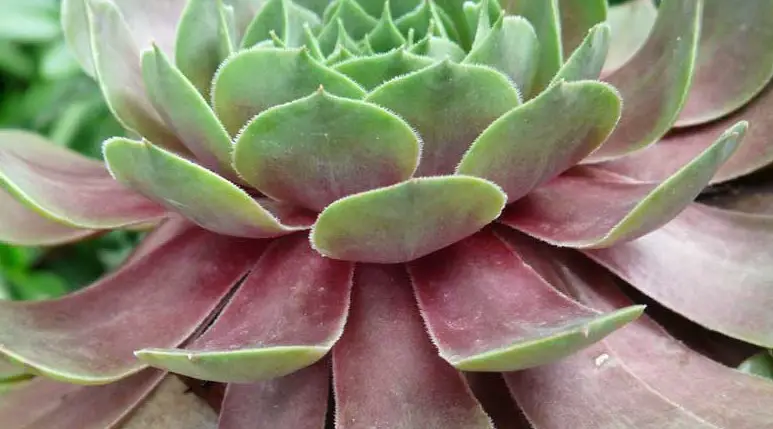
- The first action that should be taken is a real good once over to see where the problem lies.
- Fixing the issue could be as simple as moving it out of direct sunlight or even offering it some shade during the peak warmth of the day.
- Otherwise, as a fail-safe, it’s wise to reboot your succulent.
- The best method is by taking it out of its pot and rinsing it gently from roots to tip.
- Remove any dead matter by trimming it off with a clean pair of scissors or pruning shears.
- Repot with new fresh, nutrient-rich soil that allows drainage.
- Give the newly potted succulent some moisture without overwatering it.
- Check on it thoroughly over the first 2 weeks to make sure it has adequate water and is not suffering from shock.
Frequently Asked Questions (FAQs)
How often should indoor succulents be watered?
There is no single answer to this question. There are many variables that affect water frequency. The best way to monitor moisture is to stick either a finger or skewer down the inside of the pot.
If it’s bone dry from top to bottom, then it’s a good idea to give it some water. Suppose the soil sticks to the probe; the plant shouldn’t be watered. It is possible to try a 14-21 day frequency, but constant checks are a must!
Can succulents be in direct sunlight?
Succulents love the sun but don’t need direct sunlight to survive. In fact, too much time in direct sunlight can have dramatic effects on the plant. Ideally, you want to place your succulent somewhere that receives both direct and indirect sunlight to allow it to rest from the stress of too many rays.
How do you treat a sunburned succulent?
The best way to treat a sunburnt succulent is to first give it some respite from the sun. Move it to somewhere where it can receive both sun and shade. This will allow it to try to correct its issue whilst still letting it grow. Alternatively, repotting it will grant it new soil, nutrients, clean water, and every opportunity to heal from the burns.
Conclusion
Growing a succulent and keeping it green and lush is a balancing act. Some owners choose to manipulate their colors; others mistreat them and assure them a shorter life than they deserve. Regardless of how the process occurs, there are ways to correct succulent leaves from turning red.
Repotting is the best method as it gives the plant every chance to survive. New soil, new food in the form of nutrients, fresh water, possibly a bigger, better pot, pretty much a new start. All in all, when succulent leaves turn red, it’s not the end of the world; it just takes a few alterations to fix. We hope that you have found this article helpful.


